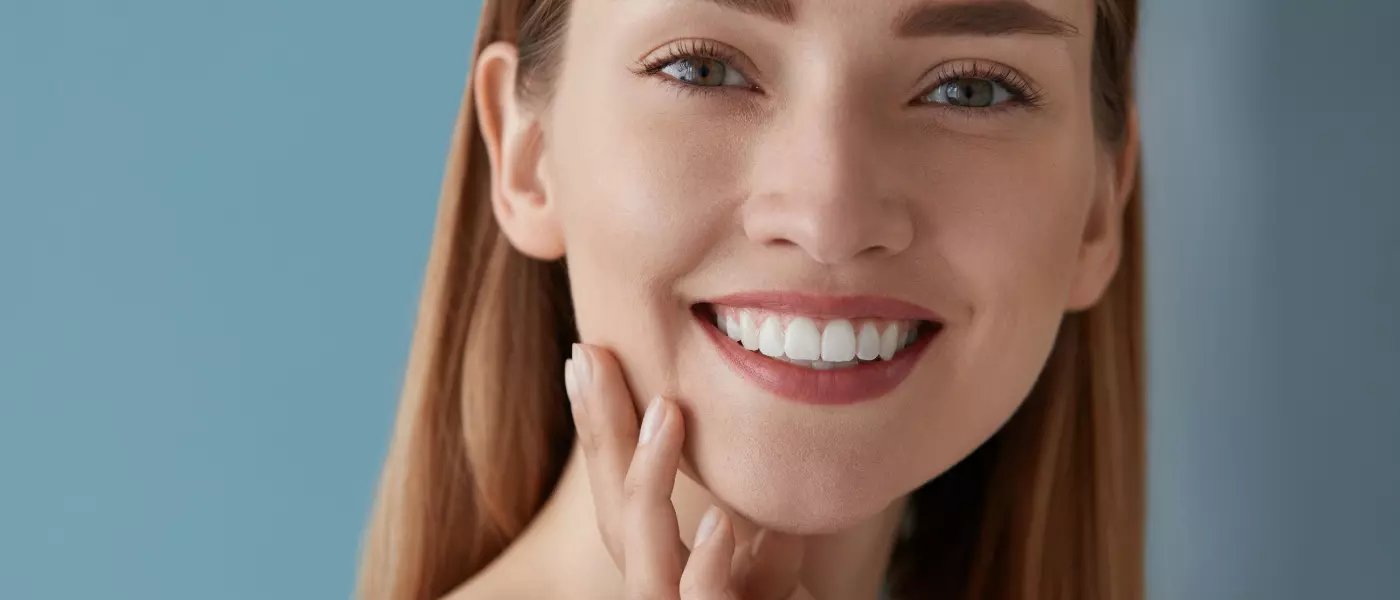Treatment Summary
Treatment Time
60 minutes
Pain
No Pain
Cost
From £225
Results Last
Up to 7 years with the right care
Composite Bonding Makeovers in London, Cricklewood
Composite bonding is a popular cosmetic dental procedure designed to improve teeth appearance. It involves the application of a tooth-coloured resin material to the teeth, which is then shaped and hardened using a special curing light. At Almás Dentistry & Aesthetics, we offer composite bonding makeovers in our London, Cricklewood clinic to treat smile imperfections such as gaps, chips, and cracks in your teeth. Here’s what you need to know if you are considering composite bonding.
Rejuvenate Your Smile With a Composite Bonding Makeover
Composite bonding (also referred to as dental bonding or tooth bonding) is a simple, affordable, and convenient procedure. Compared to more extensive procedures such as composite veneers or crowns, it is minimally invasive. The treatment uses a material very similar to that used for tooth-coloured fillings to disguise small imperfections like gaps in teeth and restore your teeth’s appearance and functionality. The tooth is prepared, usually with an etching solution, and we apply and shape the material, making it look natural. It is then set, or bonded, into place using a special light to blend with your natural teeth. Reshape your smile and teeth in as little as one appointment!
What Can Composite Bonding Achieve for London Patients?
Composite bonding effectively addresses various dental imperfections to enhance your smile. It is ideal for filling in minor chips and cracks, reducing gaps between teeth, covering stains that can’t be fixed with teeth whitening, lengthening short teeth for better teeth shape symmetry, and reshaping teeth that are oddly shaped. Bonding can also shield exposed roots due to gum recession. The versatility of composite bonding makes it a viable solution to improve your smile’s aesthetic swiftly and effectively.
Benefits
- Non-invasive, Composite bonding is a non-invasive treatment and does not require an anaesthetic.
- Whitening, the procedure can improve the appearance of discoloured teeth.
- Straightening, composite bonding can straighten slightly crooked teeth.
Frequently Asked Questions
Not typically but like all teeth, they should be brushed and flossed daily, and professionally cleaned at the dental office twice a year. Bonded teeth can also become stained from tobacco use, red wine and coffee — but unlike regular teeth, bonded teeth can’t be lightened. So if you’re considering tooth-whitening treatments, have them done before your teeth are bonded.
The lifespan of bonding materials for the teeth depends on how much bonding was done and your oral habits. Typically, however, bonding material lasts between 5-7 years before needing to be touched up or replaced.
Composite bonding blends seamlessly with your smile. During the shade selection process, the dentist will select a composite resin colour that closely matches your natural teeth.
Generally, composite bonding is not considered painful. It is one of the least invasive dental cosmetic treatments available. It does not require significant tooth reduction or anaesthesia. It affects only the tooth’s surface, and minimal tooth removal is involved. However, if bonding is used to fill a decayed tooth, you may require a local anaesthetic to numb the area. If you have sensitive teeth or gums, discuss this with our team to ensure your comfort during the procedure
The composite bonding process typically involves these steps (often completed in one appointment):
- Consultation and Evaluation – During your consultation, we will evaluate the condition of your teeth to determine if you are a good candidate for composite bonding. We will create a personalised treatment plan, which may involve taking photos, X-rays, or impressions of your teeth.
- Surface Preparation – On the day of the procedure, our dentist will prepare the surface of your teeth to receive the bonding material. This usually involves a gentle phosphoric acid solution that roughens the tooth surface for better bonding.
- Bonding Application – Our dentist then applies the composite resin to your teeth, shaping it to achieve the desired look. We will select the composite resin colour that closely matches the shade of your natural teeth or the desired whiteness you have agreed upon with the dentist.
- Curing and Hardening the Resin – Once the resin is applied and shaped, a high-intensity curing light is used to harden it. This process takes only a few minutes per tooth.
- Finishing Touches – After the resin has hardened, further shaping and trimming may be needed to achieve the perfect fit and appearance. Finally, the dentist will polish the teeth, giving them the appropriate shine and smooth feel.
We suggest avoiding staining foods, beverages (red wine, coffee, tea, and berry juices), and tobacco during the first 48 hours. Additionally, we recommend avoiding hard foods like ice, candy, or nuts, which could chip the bonding material. Sticky foods should be avoided because they can tug and put excessive force on the bonding material. We recommend maintaining a balanced diet with good oral hygiene.
Dental bonding is suitable for individuals seeking cosmetic improvement for minor imperfections such as chips, cracks, discolouration, and small gaps between teeth. If you want to address more significant structural or alignment issues, we may suggest orthodontics or dental crowns. We will evaluate your oral health history, teeth condition, and specific goals to determine if composite bonding is suitable for you. Contact us to discuss your smile design needs in London and Cricklewood!
What Should You Expect Post-Treatment?
After your dental bonding procedure in our London dental clinic, you can resume standard activities immediately without any recovery time. Mild sensitivity to hot or cold foods may occur initially but should subside quickly. You can eat and drink as usual after the procedure. However, we recommend avoiding staining substances like coffee, tea, or tobacco during the first 48 hours. To ensure the bonding material lasts, it is essential to practice good oral hygiene, avoid chewing on hard items that could chip the bonding, and attend regular dental check-ups.







